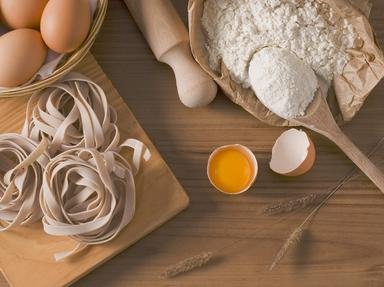Quiz Answer Key and Fun Facts
1. Which buttery and flaky pastry item takes its name from its shape which resembles a crescent moon?
2. Profiteroles are little balls of airy pastry filled with cream. They are also known as cream puffs in the USA. What sort of pastry is used to create a profiterole?
3. You've taken a pile of profiteroles, assembled them into a tower and stuck them together with caramel. What have you made for a festive occasion?
4. Which cake gets its lightness from beaten egg whites and takes its name from a sheer material?
5. Pumpernickel is a dark bread from the Westphalia region in Germany. Flour from which grain is used to make a traditional pumpernickel?
6. In 1903 a rich and elegant cake made of thin layers of almond sponge interspersed with chocolate ganache and coffee buttercream premiered in Paris. What is this scrumptious cake called?
7. Lady Florence Bjelke-Petersen was the wife of Sir Joh Bjelke-Petersen, the Queensland Premier in the 1970s. She was famous for her scone recipe which featured which vegetable?
8. A bakewell tart is a pastry tart case with a little strawberry jam, topped with a frangipane filling. The Bakewell tart was invented in the town of Bakewell in which northern English county?
9. Karjalanpiirakat are small rye pastry cases filled with a rice porridge and served with egg butter. From which northern European country did they originate?
10. Flatkakas are soft, thin and dark unleavened breads traditionally cooked on hot stones or on the embers of a fire. Often served with a savoury topping such as smoked salmon or mutton paté, they originated in which European country?
Source: Author
Tizzabelle
This quiz was reviewed by FunTrivia editor
WesleyCrusher before going online.
Any errors found in FunTrivia content are routinely corrected through our feedback system.

